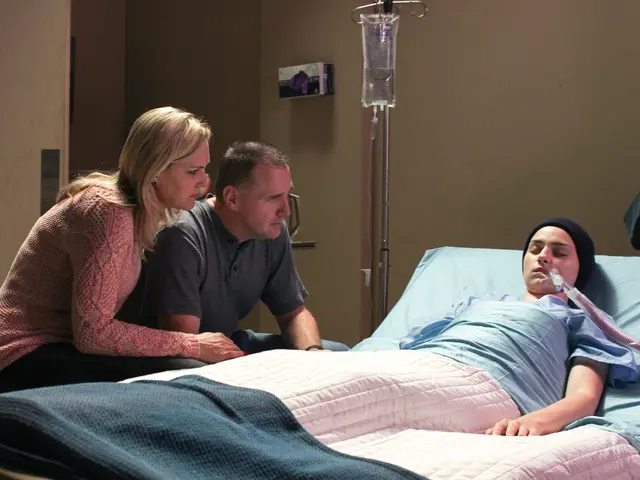A comprehensive look at Fallot's Tetralogy, a congenital heart defect that affects the structure and function of the heart.
Fallot's Tetralogy, a complex congenital heart defect named after Étienne-Louis Arthur Fallot, requires careful management for individuals diagnosed with the condition. This article aims to provide an overview of the long-term consequences, management strategies, and the prognosis for those living with Fallot's Tetralogy.
Long-term Consequences
Individuals who have undergone repair for Tetralogy of Fallot (TOF) may face several long-term consequences. These include:
- Ventricular Arrhythmias and Sudden Death: Adults post-repair are at an increased risk of ventricular arrhythmias and sudden cardiac death.
- Heart Failure: Although less common in TOF due to its distinct physiology, heart failure can still occur, especially if the repair is incomplete or if there are complications.
- Residual or Recurrent Pulmonary Stenosis: Some individuals may experience residual or recurrent pulmonary stenosis, requiring ongoing monitoring and possible interventions.
- Cyanosis and Related Complications: Although less common after repair, prolonged cyanosis before surgery can lead to complications such as clubbing of the fingers, slowed growth, and poor development.
- Pregnancy Risks: Women with repaired TOF are at risk for complications during pregnancy, including potential cardiac issues and the need for careful antenatal management.
Management Strategies
Effective management of TOF involves a combination of surgical repair, medical interventions, and lifestyle adjustments:
- Surgical Repair: Full surgical repair within the first year of life is crucial for optimal outcomes. This may involve palliative procedures before definitive repair.
- Medical Management:
- Hypercyanotic Spells: Treatment includes comfort measures, oxygen, and medications for acute episodes.
- Endocarditis Prophylaxis: Essential for preventing endocarditis, especially before certain medical procedures.
- Lifestyle Adjustments:
- Activity Level: While TOF patients can lead active lives, they should avoid high-intensity sports that may increase the risk of arrhythmias.
- Monitoring: Regular cardiac check-ups are necessary to monitor for complications and adjust treatment plans as needed.
- Pregnancy and Family Planning: Women with TOF should receive careful antenatal care and consider genetic counseling if considering pregnancy.
- Genetic Counseling: Useful for families with a history of TOF, as it can be linked to genetic conditions like the 22q11 microdeletion.
By combining these strategies, individuals with TOF can manage their condition effectively and improve their long-term quality of life.
Prognosis
The prognosis for children with Fallot's Tetralogy has significantly improved with advances in surgical techniques and postoperative care. Many patients can expect to live into adulthood and lead active, fulfilling lives. With the right care and management, individuals with Fallot's Tetralogy can lead fulfilling lives.
Common symptoms of Fallot's Tetralogy include cyanosis, shortness of breath, fatigue, heart murmur, and clubbing. The condition is characterized by four specific heart defects: Ventricular Septal Defect (VSD), Pulmonary Stenosis, Overriding Aorta, and Right Ventricular Hypertrophy (RVH).
Understanding these components is crucial for diagnosing and managing Fallot's Tetralogy effectively. Early diagnosis and intervention can significantly improve outcomes for individuals with Fallot's Tetralogy. In some cases, individuals with Fallot's Tetralogy may experience "tet spells," which are sudden episodes of increased cyanosis and difficulty breathing. Palliative Surgery may be performed if the child is too small or weak for complete repair, helping improve blood flow until the child is ready for a more comprehensive surgery.
Building a strong support system is crucial, including family and friends, healthcare team, and community resources. Education about the condition is vital for understanding Fallot's Tetralogy and making informed decisions regarding health and lifestyle. Regular follow-up care is essential to monitor for these potential complications and address them promptly. Early intervention and comprehensive care are key to achieving the best outcomes.
With the right care and management, individuals with Fallot's Tetralogy can lead fulfilling lives. After surgery, ongoing care is crucial, including regular follow-ups with a cardiologist, medication management, activity restrictions, and monitoring for arrhythmias. The long-term outlook for individuals with Fallot's Tetralogy has improved significantly over the years, thanks to advancements in medical technology and surgical techniques.
- Regular check-ups focusing on health-and-wellness, cardiovascular-health, and medical-conditions are essential for individuals living with Fallot's Tetralogy to manage their long-term consequences effectively.
- In the pursuit of optimal cardiovascular-health, those diagnosed with Fallot's Tetralogy may need to adopt lifestyle adjustments such as avoiding high-intensity sports and undergoing routine medical management strategies to mitigate risks and improve their long-term prognosis.



